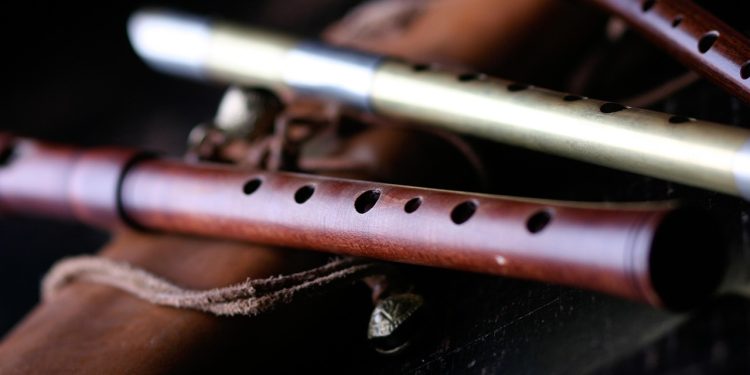The Low Whistle: A Modern Tradition with Yorkshire Roots

Though it may sound ancient, the low whistle is a relatively recent addition to the family of traditional Celtic instruments. With its deep, breathy tone and soulful expressiveness, it has become a mainstay in Irish, Scottish, and even cinematic music. And while its origins lie in the Midlands, Yorkshire has emerged as a key centre for the instrument’s development, craftsmanship, and community.
A Humble Invention
The low whistle as we know it today was developed in the early 1970s by Bernard Overton, a musician and maker based in Leicester. When renowned Irish folk artist Finbar Furey broke a beloved bamboo flute, he turned to Overton in search of a replacement. Using aluminium tubing—originally from a TV aerial—Overton crafted a large, low-pitched whistle with a warm and breathy tone.
That prototype, pitched in the key of D, became the first true low whistle and sparked a quiet revolution in the world of traditional music.
A Legacy Rooted in the North
The low whistle may be a modern invention, but it emerged in the context of a much older whistle-making tradition. One of the best-known names in this tradition is Generation Music, founded in Manchester in the mid-20th century. Generation’s iconic brass and nickel whistles helped standardise the modern tin whistle and made the instrument widely accessible across the UK and beyond.
Building on this legacy, the low whistle added a new sonic register—deeper, more resonant, and more expressive—while maintaining the whistle’s simplicity and charm.
Yorkshire’s Role in the Low Whistle Story
Today, Yorkshire stands proudly as one of the world’s key centres for low whistle making and playing.
Howard Music, originally founded by master maker Brian Howard, continues to produce finely crafted low whistles from its base in Yorkshire under the stewardship of David O’Hagan. Howard whistles are known for their consistency, rich tone, and player-friendly design, making them a popular choice among both newcomers and professionals.
Also based in Yorkshire is Big Whistle, home to the world’s largest dedicated whistle shop. More than just a retailer, Big Whistle is a community hub and educational resource for whistle players worldwide. Its commitment to accessibility, quality, and tradition has helped foster a growing international interest in both high and low whistles.
A Sound that Travels
In the 1980s and 1990s, the low whistle gained widespread popularity thanks to musicians such as Finbar Furey, Davy Spillane, and Michael McGoldrick. Its haunting sound became a defining feature in shows like Riverdance, film soundtracks, and contemporary folk albums.
Though commonly used for slow airs and laments, the low whistle is remarkably versatile, capable of handling fast reels and intricate ornamentation in the hands of skilled players.
Design and Playability
Structurally similar to the tin whistle but pitched an octave lower, the low whistle’s larger size gives it its signature mellow tone. However, its wide finger spacing often requires the use of the “piper’s grip,” a relaxed hand position borrowed from uilleann pipers.
The most common low whistle is in the key of D, though whistles in other keys—such as A, G, and C—are also widely played.
Alongside Yorkshire-based makers, other respected names include Goldie, MK, Kerry, and Chieftain. Yet the contributions of Yorkshire-based artisans and businesses continue to shape the global low whistle landscape.
A Young Instrument with Timeless Appeal
While the low whistle may be just over 50 years old, it feels at home among much older instruments. Its emotional range and organic tone allow it to blend seamlessly into traditional music while also shining in modern genres.
Thanks to the craftsmanship of makers like Howard Music, the reach of retailers like Big Whistle, and the cultural enthusiasm found in Yorkshire and beyond, the low whistle continues to grow in popularity. Its story may be young, but its voice is timeless.








